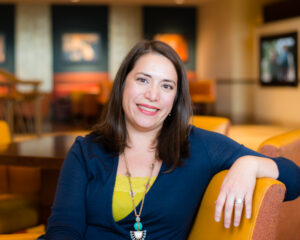 2 min read October 2022 — Invest: spoke with Robyn Popa, managing principal of the San Antonio Office of Pfluger Architects, about the firm’s 50-year anniversary, the importance of diversifying ownership and the value of being proactive instead of reactive when building new educational facilities.
2 min read October 2022 — Invest: spoke with Robyn Popa, managing principal of the San Antonio Office of Pfluger Architects, about the firm’s 50-year anniversary, the importance of diversifying ownership and the value of being proactive instead of reactive when building new educational facilities.
What have been some key highlights for Pfluger Architects over the last year?
Regionally, the last three years have been rough on providers specializing in public sector work. It’s encouraging, on a lot of levels, to see public projects come back to life. Growth in public sector projects means those design and construction firms that were hit hard can start building up their staffing and resources again. It’s a promising sign that things are getting back to normal.
Pfluger is now celebrating its 50th anniversary and has expanded by adding six new principals. What new opportunities will growth in your leadership team allow you to take advantage of?
Our 50th anniversary is exciting. Businesses with that kind of longevity don’t tend to grow and thrive with stale leadership. Promoting principals from within is a way to celebrate loyalty and diversify ownership. And, giving people a stake in something they helped build gives them a sense of pride and responsibility. The trickle-down is our ability to expand into new markets like Dallas-Fort Worth and Corpus Christi. Increasing our presence throughout the state means we can improve our response to client needs.
What role does the architecture sector play in the economic growth of the region?
Architects are like little bits of a crystal ball. We often work with economic development agencies and chambers of commerce to proactively prepare for economic or population booms.
Having said that, we specialize in the educational sector, and districts are often pressed for the need for new facilities after the demand is already there. Our goal is to help them shift from being reactive to being proactive by providing comprehensive assessments that look at the lifespan of their current facilities, then compare that data to demographics and trends to help them better plan for growth. Being proactive gives them time to look for land or plan for a new campus in an area with anticipated growth. Everything works as it should when facilities are ready at the time students are there to occupy them.
What projects are you most excited about?
There are a lot, and they range in size from large and complex to small projects with sentimental value.
One we are excited about is an original 1893 rock schoolhouse that we are renovating to become a central office. It’s inspiring to work on a landmark building with historical significance and know that our efforts will ensure it can continue serving the community for another century.
Then, there’s one of our largest projects—a new high school for a private client. It mirrors the size and scope of a comprehensive 2,500-student public high school. It’s exciting to see the private sector adopting active learning and collaborative spaces that can accommodate multiple educational teaching models.
What are some of the latest trends and designs that are impacting the business?
Like the high school I referred to, one trend is space allocation. Previously, we had the luxury of developing rooms tailored to specific educational programs. Now we look more critically at how each space can serve multiple functions.
We are also looking carefully at the spaces we plan for mechanical systems. Not just as a response to COVID, but because schools are getting more sophisticated. Mechanical and electrical spaces are larger than in the past, and we are often increasing access control, so we have to be mindful of the balance of convenience with security and life safety.
We are also seeing a greater focus on energy efficiency with systems, the exterior envelope, and the orientation and exposure of buildings. Each of these considerations can affect long-term operating expenses in addition to the initial construction cost. And concerning construction costs, we all know how volatile the current construction market is. We are having more conversations with our contractor colleagues about available and affordable materials. More than ever, we need proactive contractors who take an active seat at the design table. A contractor involved early in the decision-making process allows the clients’ dollars to stretch further.
What are your top priorities for the firm over the next few years?
Personally, I am actively working to make sure my office staff feels valued and respected. We have a great group of people, and creating a work environment that makes them happy to be part of Pfluger is a priority. COVID taught us that if there are other options out there, employees will take them. So, I’m always thinking about what I can do to make them want to stay at this 9-5 job for as long as possible.
So, we try to find ways to build in a bit of fun—to provide a balance. The people who stick around here tend to be competitive—with each other and our peers. So, we work hard. As a team, we continue to push the envelope with what we are capable of doing and how we can stretch our expertise to make a difference for each other and our clients. To prevent burnout, we are building a culture that is more like family, or at Pfluger, we call it pfamily.
For more information, visit:
